The top 5 must-try seafood dishes in Malaga

While paella gets all the limelight, especially from foreigners, Malaga’s coastal cuisine offers so much more. This Mediterranean city has perfected the art of simple, fresh seafood preparations that let the quality of the catch shine through.
Armed with little more than olive oil, sea salt and centuries of fishing tradition, malagueños have created dishes that are beloved across Spain.
If you’re visiting Malaga and want to eat like a local, these five seafood dishes should be at the top of your list. Each one represents an authentic taste of coastal Andalusia that you won’t find anywhere else quite like this.
1. Espetos – Malaga’s iconic sardine skewers
If there’s one dish that defines Malaga, it’s the espeto. This isn’t just food: it’s a cultural institution. Picture yourself on the beach at sunset, watching a chef tend to rows of sardines grilling over a boat-shaped fire pit fueled by olive wood branches. The smoke, the sizzle, the sea breeze – it’s quintessentially Malaga.
The preparation is deceptively simple. Fresh boquerones (the local term for these small sardines) are skewered while still whole, seasoned with coarse sea salt, and stuck upright in the sand around the fire.
The olive wood smoke gives them an unmistakable flavour while the intense heat creates a slightly crispy skin that gives way to incredibly juicy, tender flesh.
The fish are typically served still on their skewers, placed on a simple plate with a wedge of lemon. You eat them with your hands, peeling away the skin and savouring the smoky, salty goodness.
When and where to try espetos
Best season: Summer (June-September) when boquerones are most abundant, though available year-round
Where to find it: Any chiringuito (beach restaurant) along Malaga’s coast, particularly in Pedregalejo and El Palo. Look for the distinctive boat-shaped grill outside: if you see smoke and smell fish, you’re in the right place.
Local tip: Espetos are often served complimentary as a tapa when you order drinks or a meal at beachfront restaurants. Don’t fill up before checking the menu!
Pairing: A cold beer (cerveza) or crisp white wine (vino blanco) is the perfect companion.
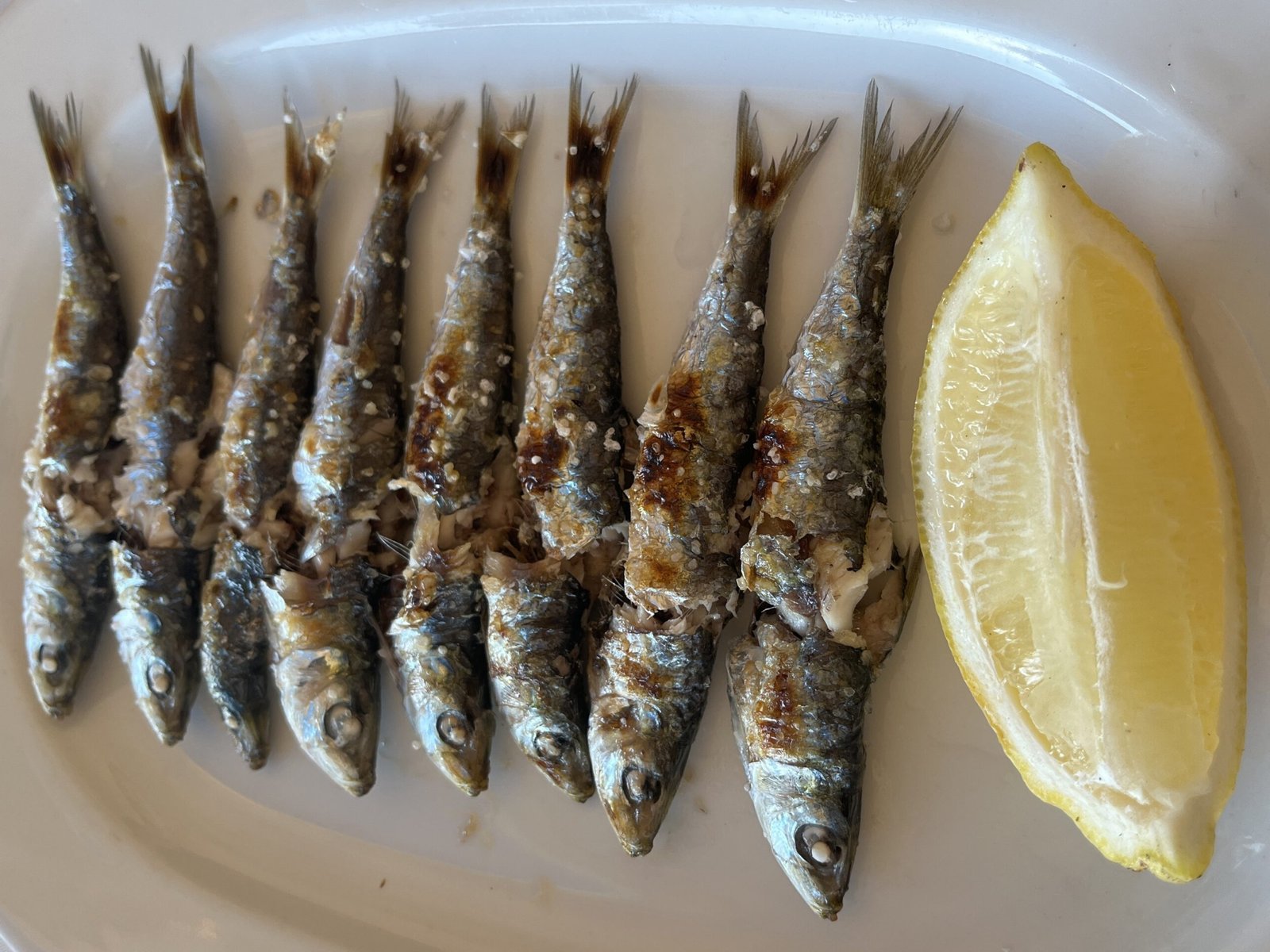
2. Fritura malagueña – the ultimate fried fish platter
If you think fried fish is greasy fast food, Malaga is here to change your mind.
The fritura malagueña represents centuries of perfected technique, creating impossibly crispy, light and non-greasy fried seafood. This is comfort food elevated to an art form.
The magic lies in three things: fresh fish, extra virgin olive oil heated to the precise temperature and a light dusting of fresh flour (never batter). The result is a golden, delicate crust that shatters at the first bite, revealing sweet, tender fish inside.
A traditional fritura platter includes:
- Boquerones (anchovies)
- Calamares (squid rings)
- Pulpo (octopus)
- Salmonetes (red mullet)
- Chocos (cuttlefish)
The platter arrives piled high and steaming hot, garnished with lemon wedges. You’ll often get a side of alioli or simply dip pieces in more olive oil with a sprinkle of salt.
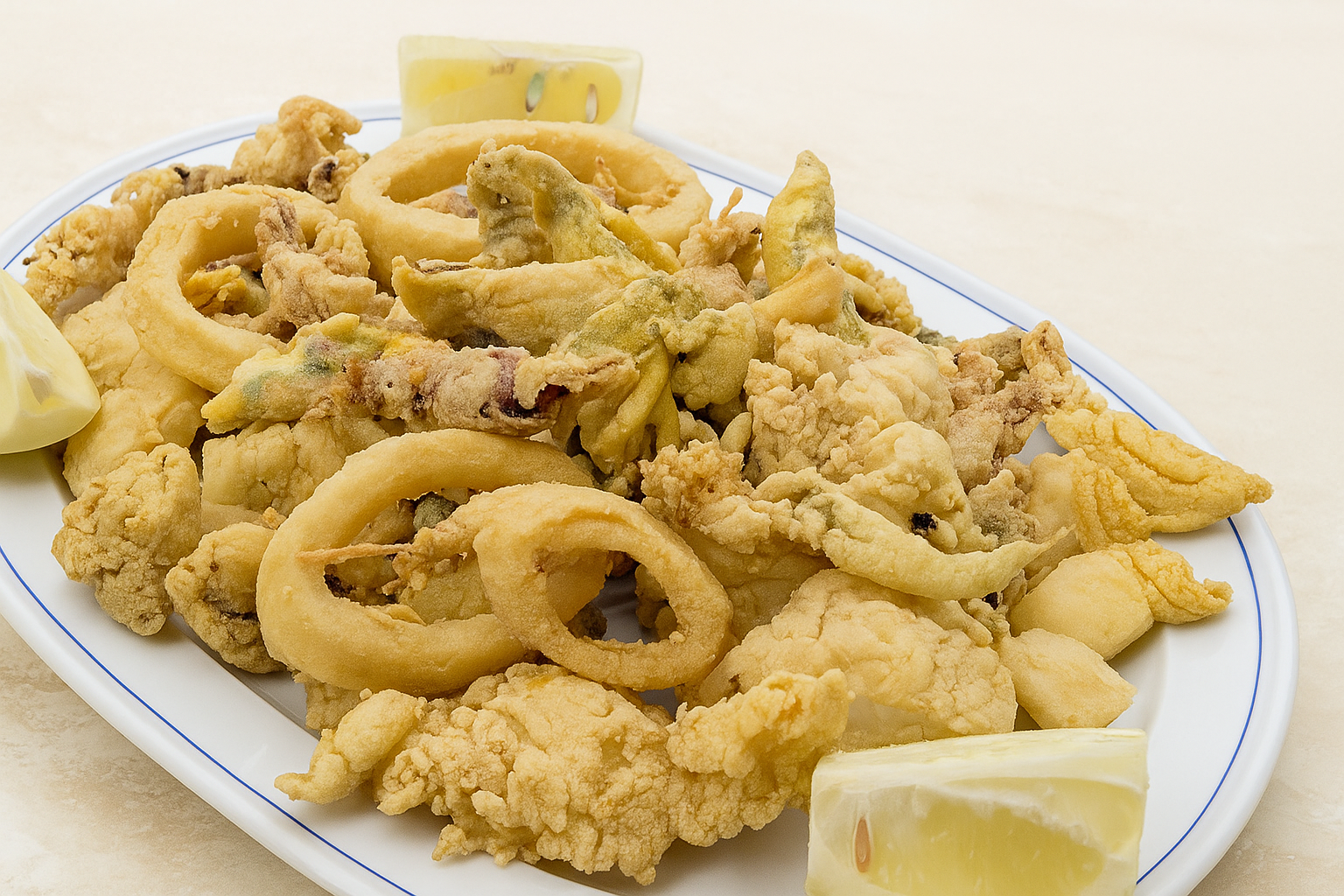
When and where to try a fritura malagueña
Best season: Year-round, but especially satisfying on cooler evenings
Where to find it: Literally everywhere, from humble tapas bars to upscale restaurants. Quality varies, so look for places filled with locals during meal times.
Local tip: Order a “ración mixta” for variety, or ask “¿Qué tienen fresco para la fritura?” (What do you have fresh for frying?) to get whatever came in that morning.
Pairing: Vino rosado (rosé wine) or a crisp Malaga white wine cuts through the richness perfectly.
3. Cazón en adobo – Malaga’s Moorish-influenced speciality
This is the dish that surprises everyone. Cazón (dogfish, a small shark species) might sound unusual, but this preparation transforms it into one of Malaga’s most addictive tapas. The recipe dates back to Malaga’s Moorish period, and one bite explains why it has survived centuries.
The fish is cut into small cubes and marinated for hours (sometimes overnight) in a fragrant mixture of garlic, cumin, paprika (pimentón), oregano, vinegar and white wine.
This marinade not only tenderises the firm fish but also infuses it with layers of flavour. After marinating, the pieces are coated in flour and fried until golden and crispy on the outside while remaining moist inside. The result is aromatic, tangy, slightly spicy and utterly delicious.
The cumin and vinegar give cazón en adobo its distinctive taste. In fact, you’ll smell it before you see it, and that aroma will draw you in.
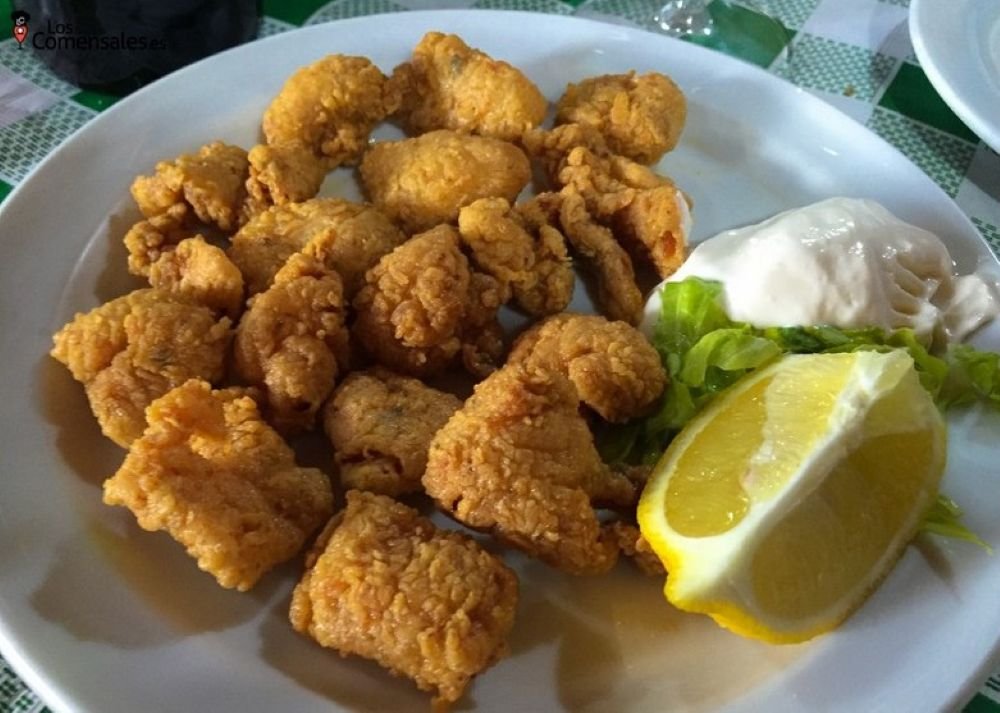
When and where to try cazón en adobo
Best season: Year-round, though particularly popular in cooler months
Where to find it: Traditional tapas bars in the city centre, particularly around Calle Granada and the historic centre. Also available at coastal restaurants.
Local tip: This is classic tapas bar food. Order it alongside other small plates and a caña (small beer). It’s often served in paper cones for casual eating.
Pairing: Cold beer or manzanilla sherry complement the spices beautifully.
4. Gambas al pil-pil – sizzling garlic prawns
The moment a terracotta dish of gambas al pil-pil arrives at your table, sizzling, fragrant with garlic, and glistening with olive oil, you’ll understand why this dish is ordered at practically every seafood meal in Malaga.
The preparation is theatrical. Prawns (gambas) are cooked quickly in abundant extra virgin olive oil with thinly sliced garlic and dried chili peppers in a shallow earthenware dish. The dish is brought to your table still bubbling and crackling. Supposedly, the “pil-pil” refers to the sound it makes.
The prawns are sweet and succulent, having absorbed the garlicky oil while maintaining their tender texture. But the real treasure is the oil left behind, so don’t waste it. You’ll want crusty bread to soak up every last drop of that liquid gold.
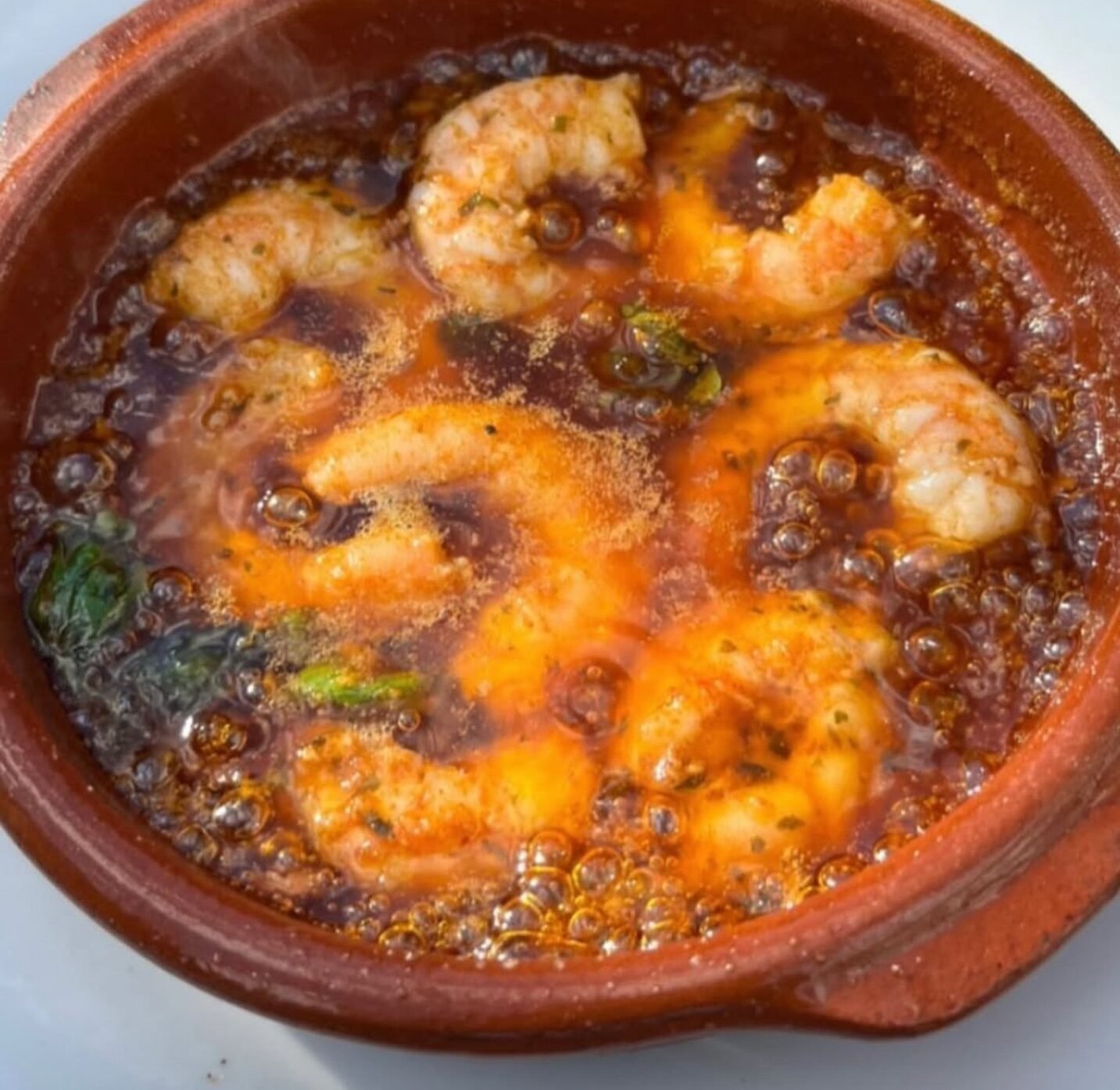
When and where to try gambas al pil-pil
Best season: Year-round, though prawns are particularly excellent in spring and early summer
Where to find it: Any seafood restaurant or marisquería (seafood specialist). Better restaurants will show you the prawns before cooking.
Local tip: Larger langostinos (king prawns) are pricier but incredibly sweet and meaty. Ask what size they have available.
Pairing: Cold beer or a light white wine. Save the bread for last to mop up the oil.
5. Conchas finas – Malaga’s sweet little clams
These tiny clams might be Malaga’s best-kept secret. Conchas finas are smaller and sweeter than regular clams, with shells so thin you can almost see through them. They’re an afternoon tapa favourite among locals who appreciate truly fresh seafood.
The preparation is minimal because these clams need nothing more than gentle steaming. They’re cooked quickly with a splash of white wine, a touch of garlic, fresh parsley and olive oil.
They open within minutes, releasing their sweet brine into the liquid. The result is a bowl of tender clams in an aromatic, slightly briny broth that tastes purely of the sea.
The shells are so delicate that locals often eat them by using an empty shell as a spoon to scoop out the meat from other shells.
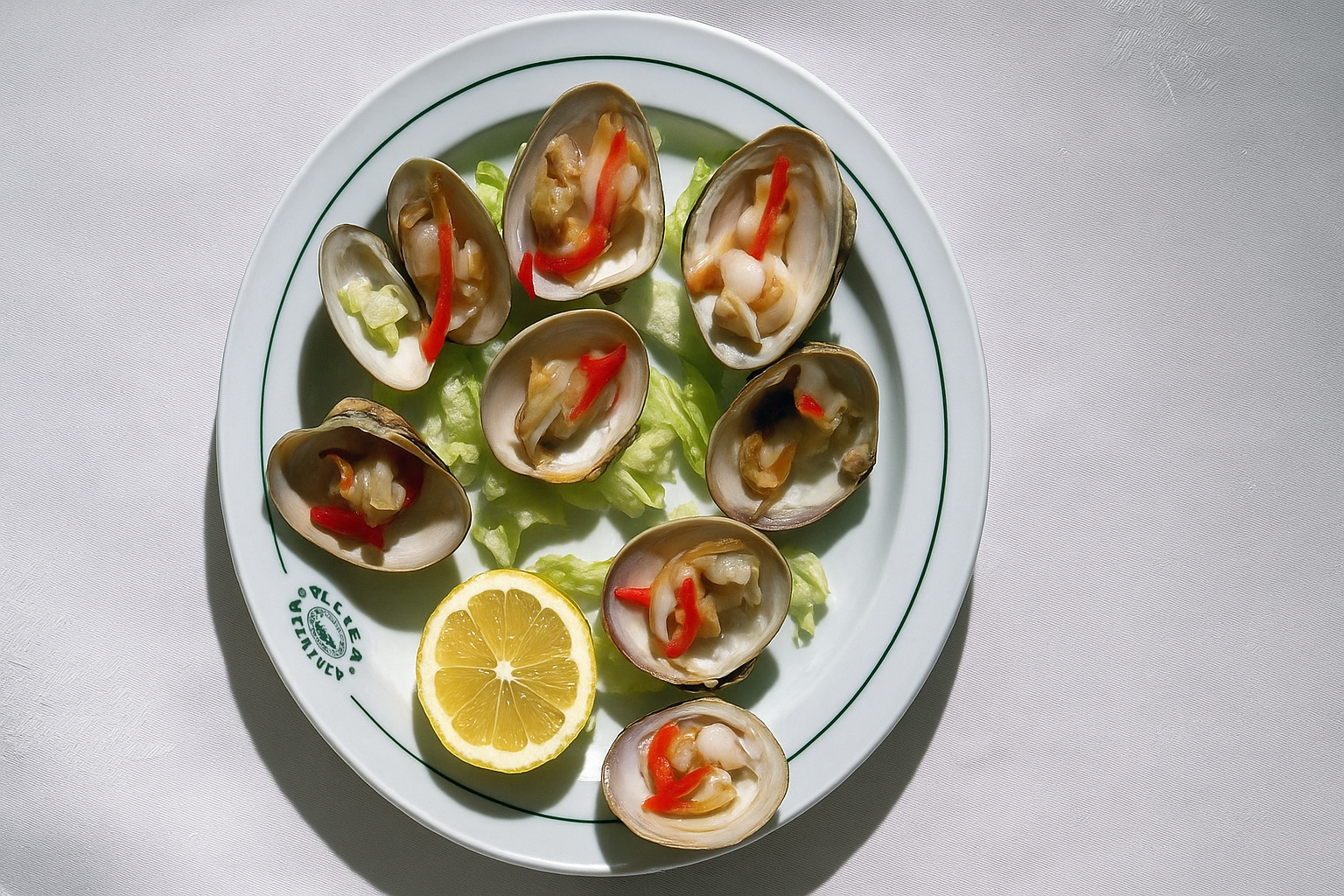
When and where to try conchas finas
Best season: Year-round, but especially popular in warmer months as a light tapa.
Where to find it: Tapas bars and seafood restaurants throughout the city. Look for them on the daily specials board (“del día”).
Local tip: Order crusty bread; you’ll need it for the broth. It really is too good to waste.
Pairing: A crisp Malaga white wine or a glass of fino sherry brings out the clams’ sweetness.
Embracing Malaga’s seafood soul
While paella deserves its fame, these five dishes represent the heart of everyday malagueño seafood culture. They’re what locals order when they head to their favourite chiringuito on Sunday, what they crave after a beach day, and what they’ll recommend when you ask for “real Malaga food.”
Each dish tells a story of fishing traditions, Moorish influences and a deep respect for simple, quality ingredients. From the smoky char of espetos to the aromatic sizzle of gambas al pil-pil, these are the flavours that define coastal Andalusia.
So on your next visit to Malaga, venture beyond the paella. Order these five dishes, eat with your hands when appropriate, soak up every drop of olive oil with your bread and discover why malagueños consider their seafood culture second to none.
Daryl is the co-founder of Malaga Guru. He is a copywriter, editor and translator who moved to Malaga a decade ago having first fallen in love with the city on his Erasmus year. After working for many years at local expat newspaper SUR in English, Daryl gained expert knowledge in life from the perspective of foreign residents and decided to co-found this site in 2016.


